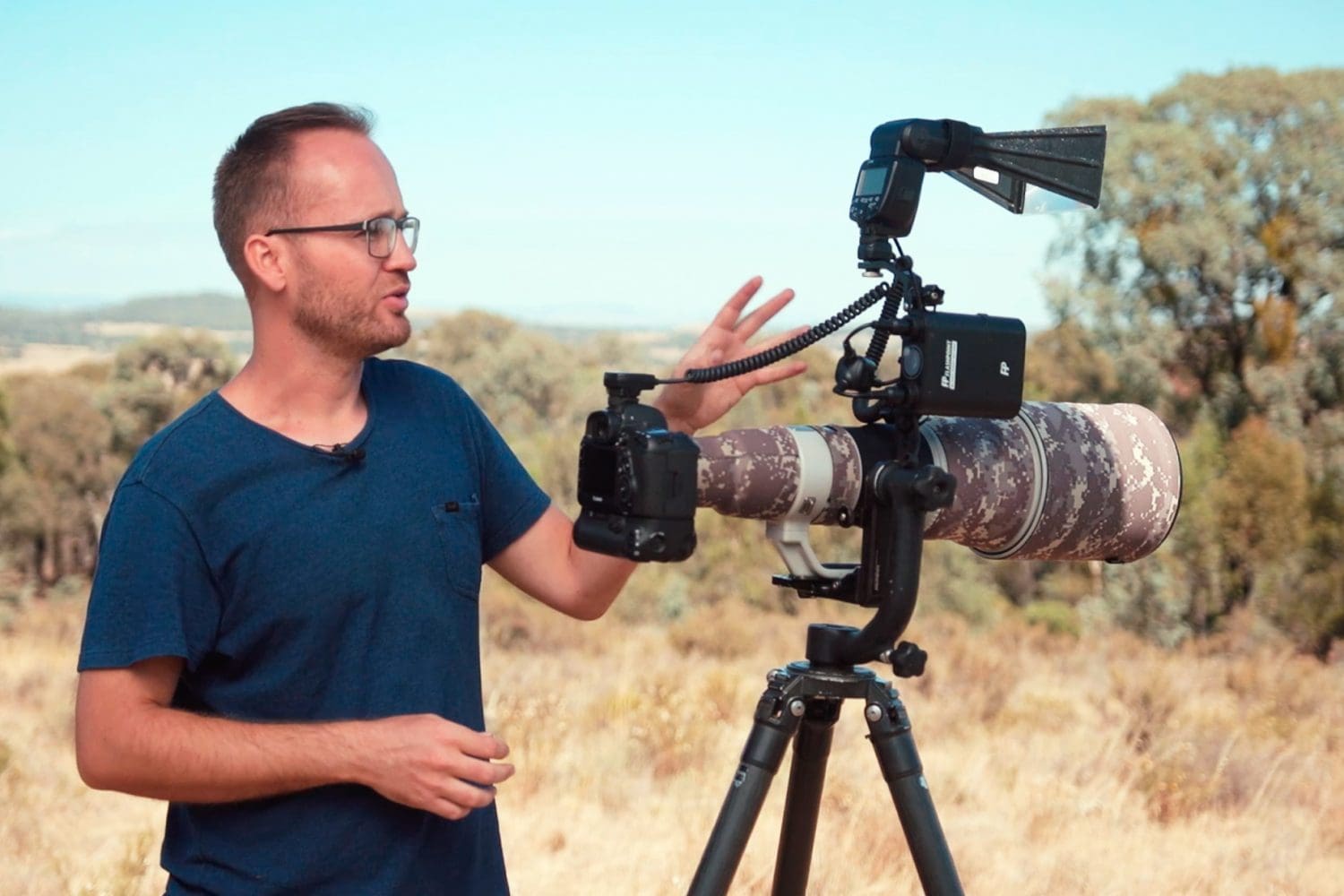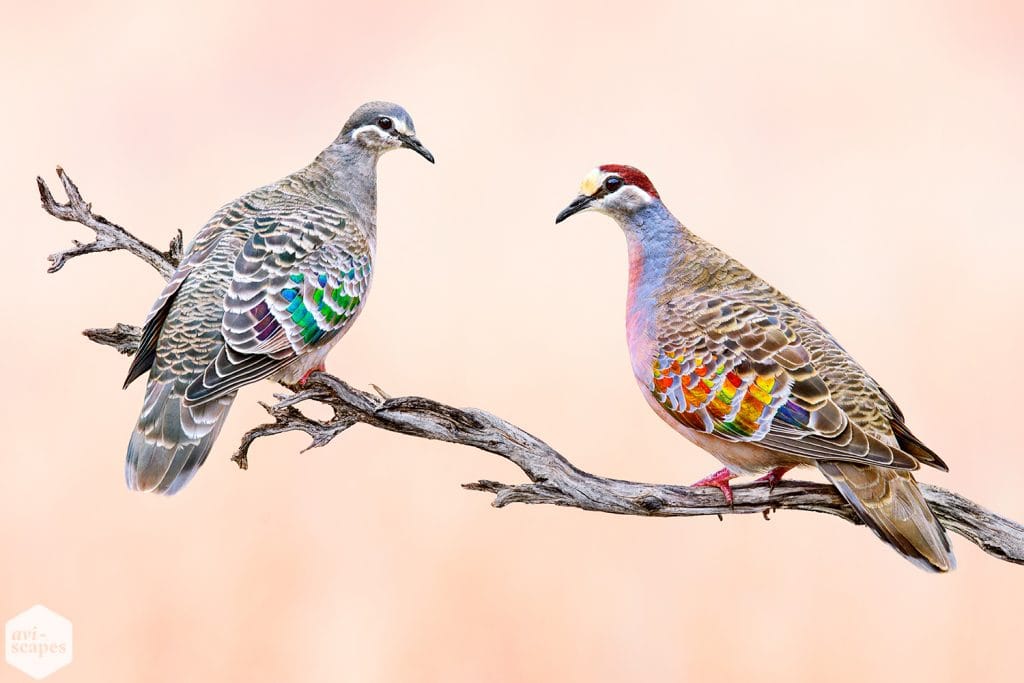When it comes to the use of flash in nature photography, there is a lot of confusion and misunderstanding. I hope this article will show what flash photography is all about and how you can benefit from it.
When I say flash, I don’t mean using the flash as the main source of light. That creates an unnatural and overpowering look. I use flash to fill in shadows and to add light to the scene to get perfectly balanced images.
Check out my video guide to see how I use my flash in the field.
There are usually three types of responses when people see the use of flash.
It scares the birds!
It’s totally unnecessary!
What’s that and why do you use it?
My response is always the same. Only rarely have I flushed a bird when using flash and in most cases the shutter sound has a much bigger impact in scaring off a bird. Most of the time, the birds will simply continue what they are doing and sometimes the flash actually helps, because it catches the bird’s attention and it poses nicely after firing the first frame.
To me, having the ability to control the light in my images with the use of flash is invaluable and it greatly increases the odds of capturing outstanding imagery.
Flash allows me to create unique images in situations I would otherwise not be able to photograph at all.
Generally there are three light situations I use flash in: Bright sun, overcast/ shade and cases where the background is brighter than the subject.
The latter is actually an effect I try to use as much as possible and I try to create by setting up in such a way that the subject and perch are getting less natural light than my background.
Here are a few examples for each situation, where the impact of the flash is clearly visible.
These are unedited RAW images.
Bright Sun
When the sun rises higher in the sky, the increased angle starts to create shadows on the subject and perch. A flash at half to full power will lessen the impact of the shadows and gives a much more even result.
No Flash – Horsfield’s Bronze-cuckoo with strong shadows on the belly and perch
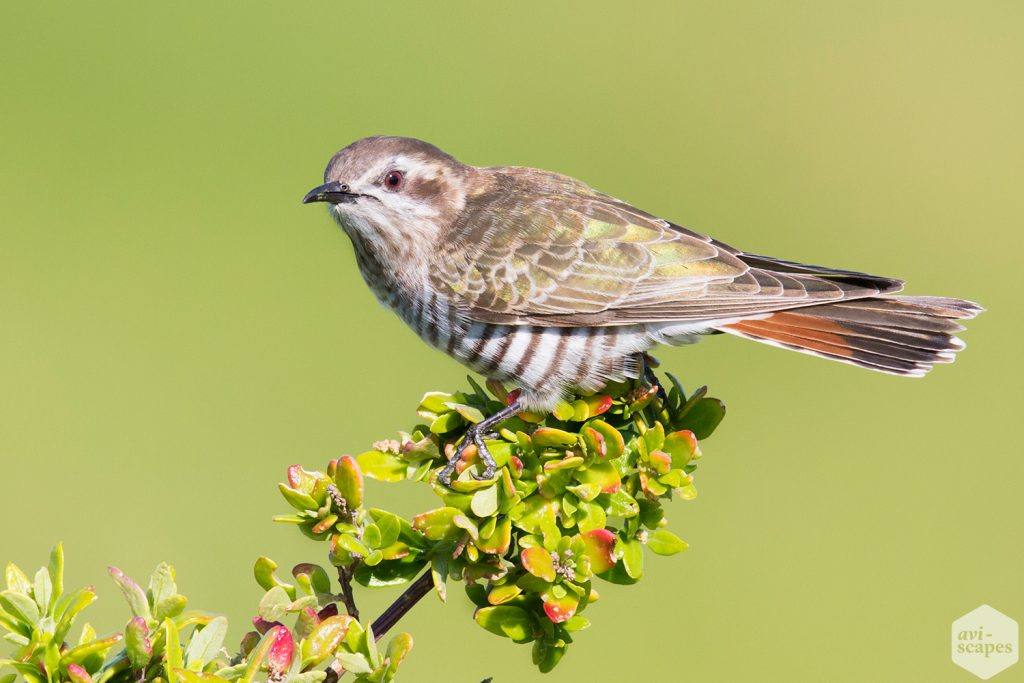
Flash – The effect of the shadows has been lessened and will allow a much better end result

As you can see in the images, the effect is subtle, but will have a great impact, when it comes to editing the image and will create a much more pleasing final result.
Overcast
Shooting in nice and even light is a great way of creating images. I love a look with no distracting shadows and bright colours. Using a flash is instrumental in achieving this style.
When it comes to overcast, the aim of the flash is to simply add a bit of extra “pop” to the image, enhancing the colours and feel of the final image.
No Flash

Almost an impossible file to edit and lifting the shadows would introduce a lot of noise. If you tried to decrease the shutter speed to brighten the image, the shutter speed would become too slow for a sharp image of a moving bird. Increasing the ISO beyond a certain level is also not recommendable. Overall, the image looks really dull and dark.
Most people will pack up their gear in a situation like that. If you know how to use your flash, this will become your favorite light situation!
However be careful not to dial in a too strong setting or not to set your flash to high speed mode (more on that later), you might end up with a shot like that!
Overflashed!

The flash was too powerful (1/16 power) for the light situation, making the Black-headed Honeyeater unnaturally bright, creating an unusable image.
Balanced Flash

With the right flash setting (here manual 1/64 Power), you can create a lovely image and take advantage of beautiful overcast days.
I used this image as an example, because everything that could go wrong, went wrong, before I got one frame that was fine! First the flash didn’t fire, then the flash was too powerful and only after a quick adjustment, I got a decent image.
Another RAW example, this time of an American Wigeon.
No Flash
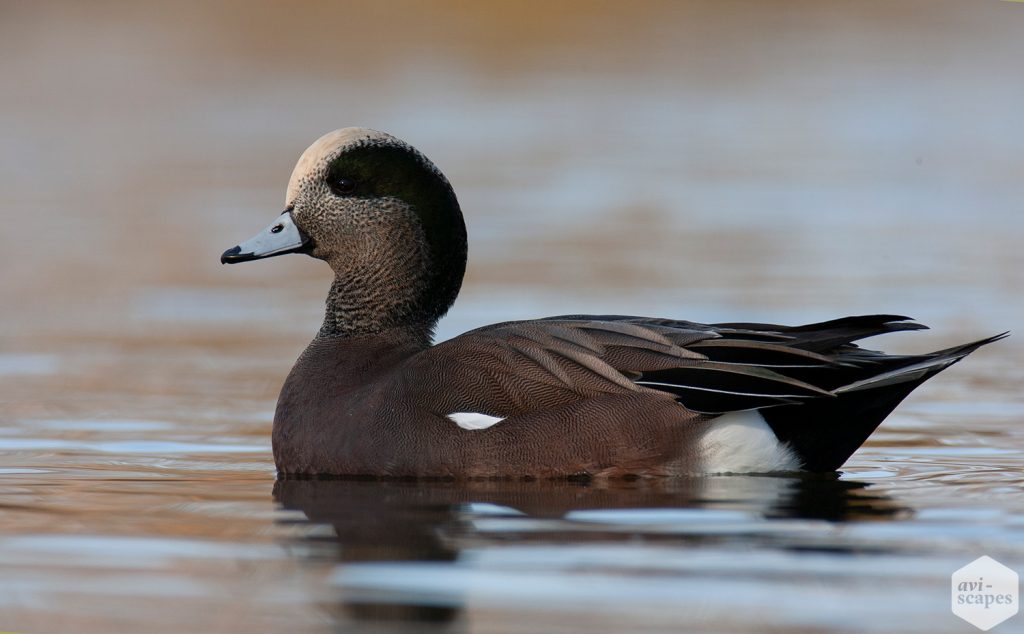
Flash
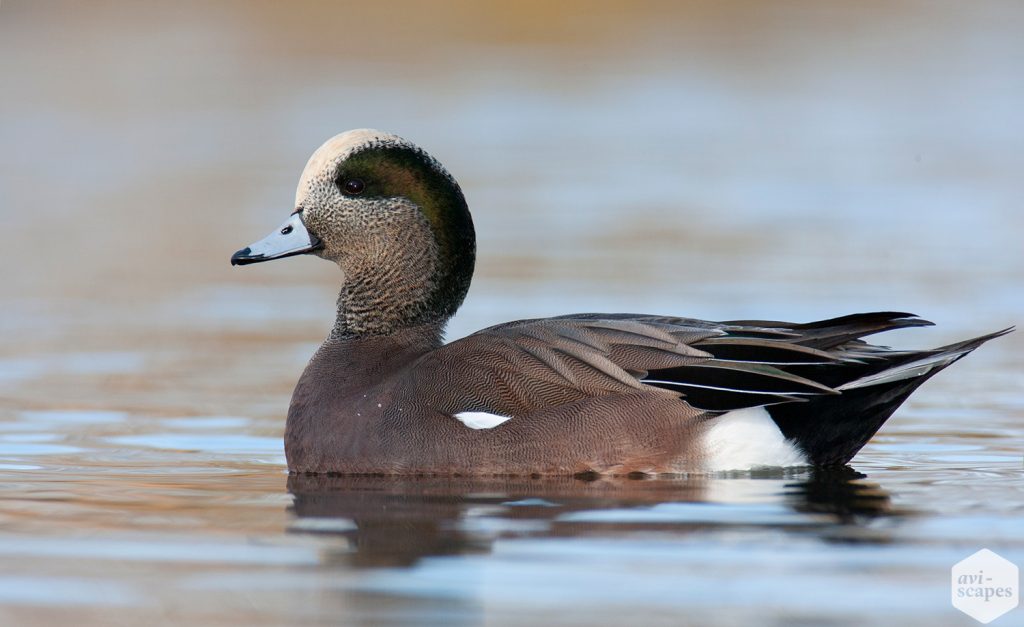
Without the flash the image is simply too dark and the colours of the duck don’t stand out.
The flash on the other hand gives the image life and makes the colours shine.
My Favourite Shooting Condition
I love situations, where the background is much brighter than the subject and perch. In cases like that, you cannot shoot without a flash, because either the background will be blown out, or the subject will be severely underexposed.
Looking at the RAW examples, we can see that the flash allows me to take beautifully balanced images, which are easy to edit.
In these cases I have to underexpose the image, so that the background isn’t blown out and then add the required light back with my flash creating an even and natural look similar to what our eyes would see.
No Flash
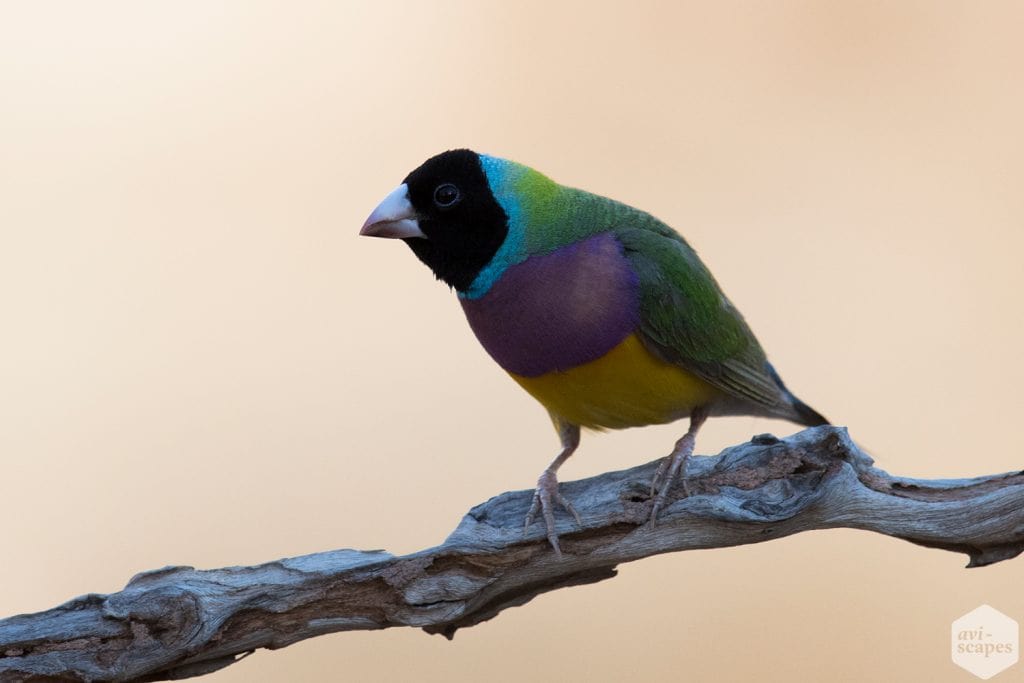
The image is dark and impossible to edit. Exposing much brighter would result in a blown out background.
Balanced Flash

The Gouldian Finch is now perfectly lit and the image will be easy to edit. Underexposing the image in combination with the flash results in a perfectly exposed image! (Flash at ½ power)
Here are a few more images taken with the techniques used above. The aim of using flash is that it’s not visible in the final image. I just want to add the perfect amount for the image to shine, without looking flashed. The best flash image is one, where no one sees that it was flashed. There are countless situations where flash has saved my day and allowed me to shoot in otherwise unfavourable conditions.
European Starling
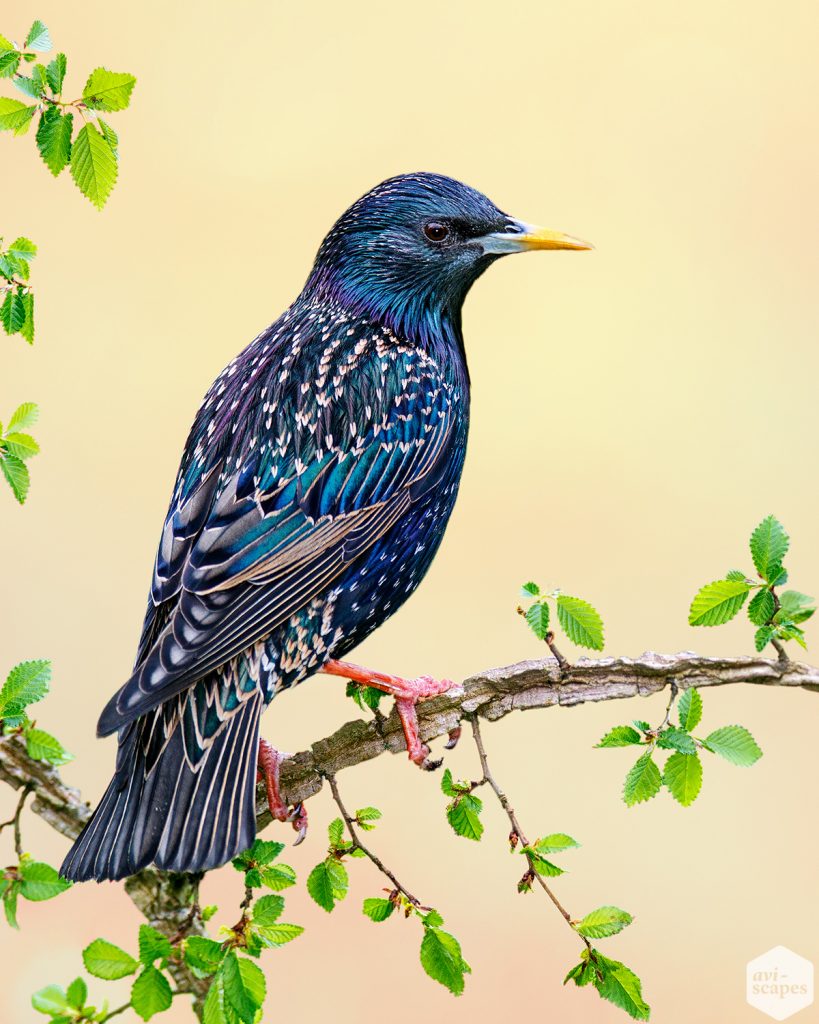
Manual flash at 1/32 power, ISO 1600, F8, 600mm – overcast, bright background, early morning – flash was essential in bringing out the details in the plumage
Painted Honeyeater
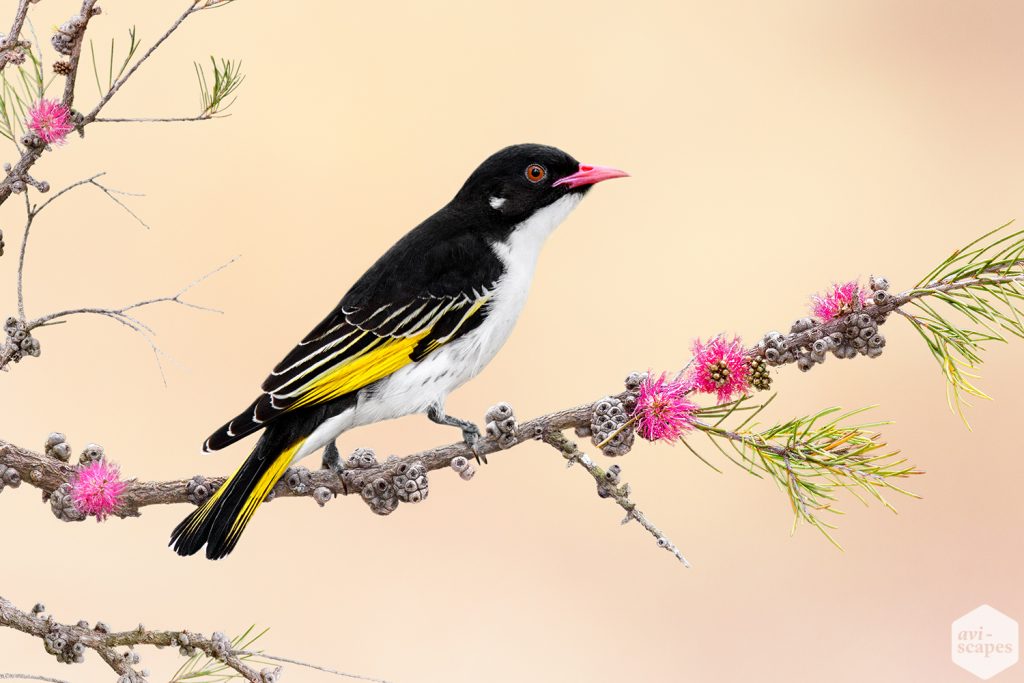
Manual Flash at 1/4 power, ISO 1600, F8, 840mm – overcast, bright background, middle of the day – flash helped to balance the scene and show all the details and colours
Dunlin
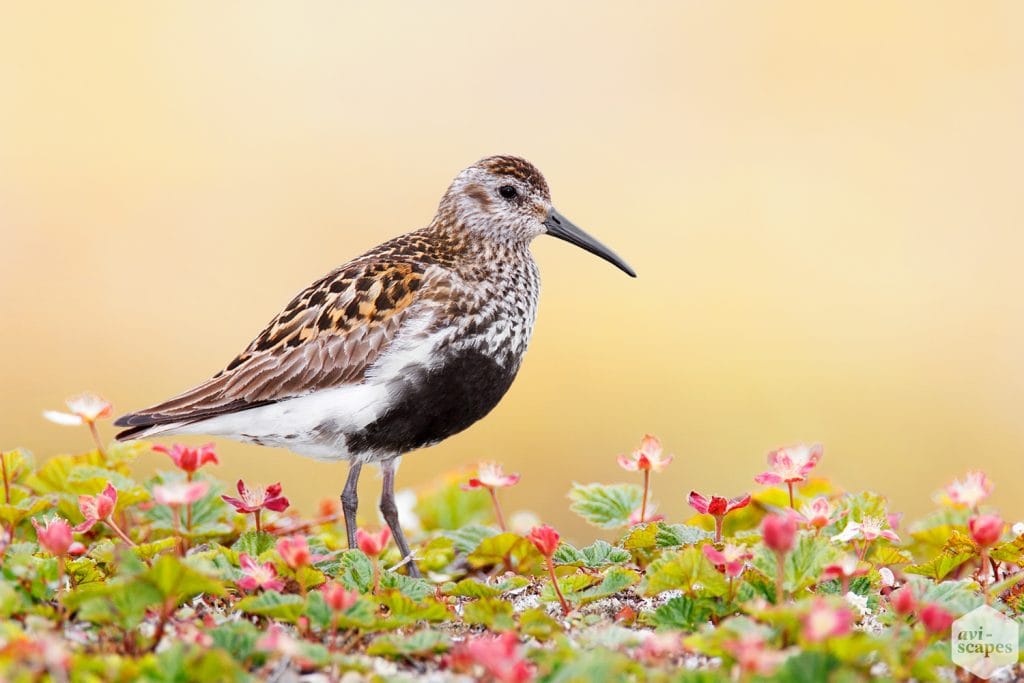
Flash manual 1/16 power, ISO 800, 840mm – overcast, light background, flash balanced the scene beautifully
Crimson Rosella
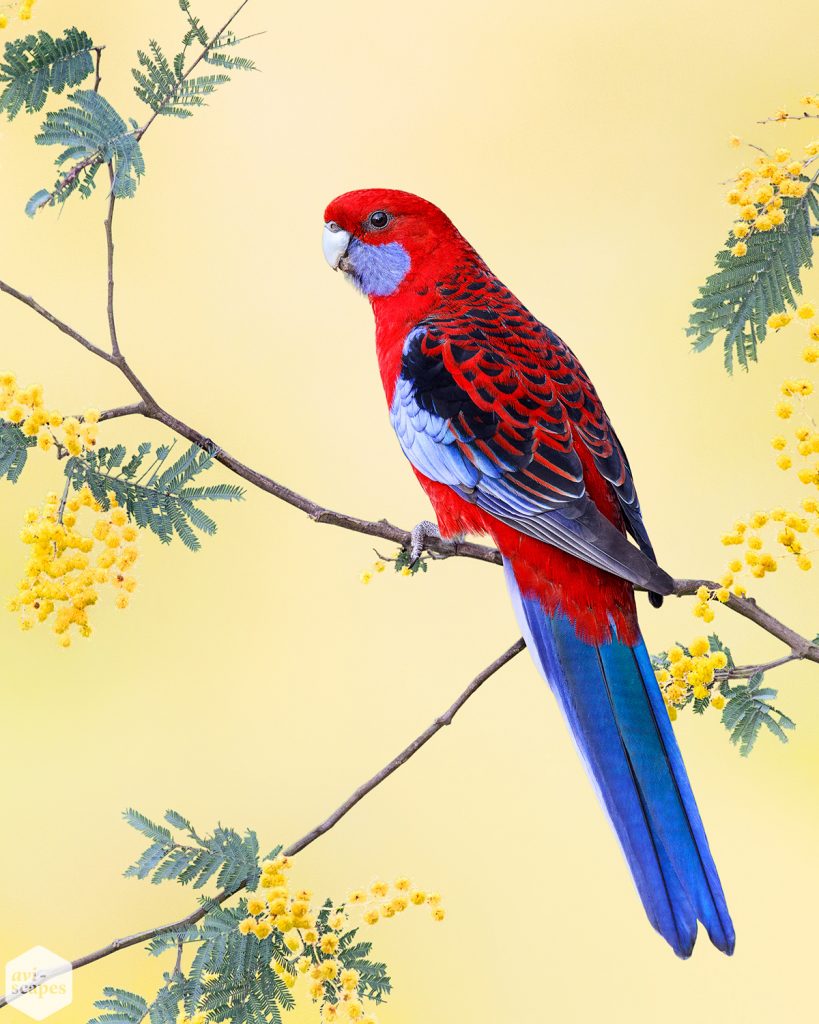
Manual Flash at 1/8 power, ISO 800, F8, 840mm – overcast, bright background, afternoon – the flash balanced the bright background and darker bird and brought out all the great colours
I hope this gives you a good idea why I use flash and what I try to achieve using it. I almost never use it as main light, all it does is to add a bit of extra light to the images. The goal is to not show that flash was used in the final image.
Also check out my free eBook “5 Common Mistakes Almost Every Bird Photographer Makes – And How To Avoid Them
